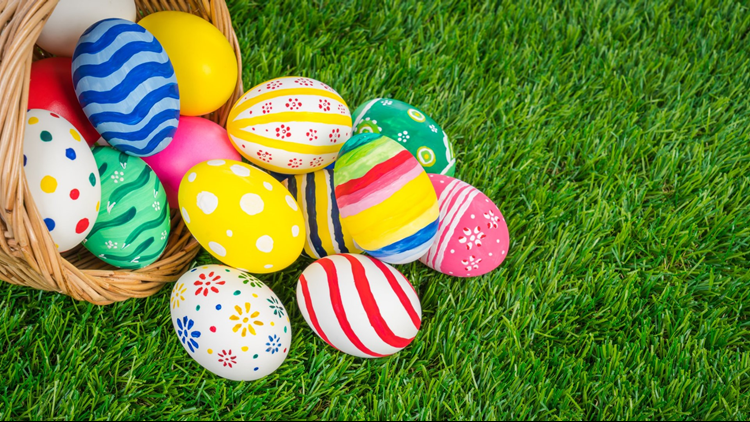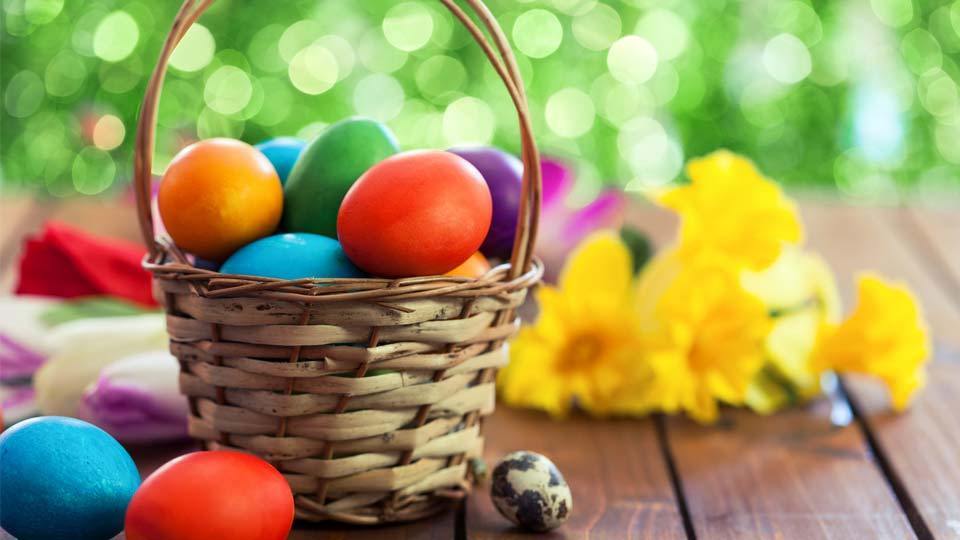Easter is rather similar to other significant vacations like Christmas and Halloween, which have evolved over the last 200 years approximately. In all of these holidays, Christian and non-Christian (pagan) elements have actually continued to mix together.
Easter as a rite of spring
The majority of significant vacations have some connection to the altering of seasons. This is particularly apparent in the case of Christmas. The New Testimony provides no information about what time of year Jesus was born. Many scholars think, nevertheless, that the primary reason Jesus’ birth became commemorated on December 25 is since that was the date of the winter solstice according to the Roman calendar.
Because the days following the winter solstice gradually end up being longer and less dark, it was ideal meaning for the birth of “the light of the world” as stated in the New Testimony’s Gospel of John.
Similar was the case with Easter, which falls in close distance to another bottom line in the solar year: the vernal equinox (around March 20), when there are equivalent durations of light and darkness. For those in northern latitudes, the coming of spring is typically met with enjoyment, as it means an end to the cold days of winter.
Spring likewise indicates the coming back to life of plants and trees that have actually been dormant for winter, in addition to the birth of new life in the animal world. Given the significance of brand-new life and rebirth, it was just natural to celebrate the resurrection of Jesus at this time of the year.
The naming of the celebration as “Easter” appears to return to the name of a pre-Christian goddess in England, Eostre, who was commemorated at start of spring. The only reference to this goddess comes from the writings of the Venerable Bede, a British monk who resided in the late seventh and early eighth century. As religious research studies scholar Bruce Forbes summarizes:
” Bede wrote that the month in which English Christians were celebrating the resurrection of Jesus had been called Eosturmonath in Old English, referring to a goddess named Eostre. And despite the fact that Christians had started verifying the Christian meaning of the event, they continued to utilize the name of the goddess to designate the season.”
Bede was so influential for later Christians that the name stuck, and for this reason Easter stays the name by which the English, Germans and Americans refer to the celebration of Jesus’ resurrection.
The connection with Jewish Passover
It is necessary to explain that while the name “Easter” is used in the English-speaking world, many more cultures refer to it by terms best translated as “Passover” (for example, “Pascha” in Greek)– a reference, undoubtedly, to the Jewish festival of Passover.
In the Hebrew Bible, Passover is a celebration that honors the freedom of the Jewish individuals from slavery in Egypt, as narrated in the Book of Exodus. It was and continues to be the most essential Jewish seasonal celebration, commemorated on the first moon after the vernal equinox.
At the time of Jesus, Passover had unique significance, as the Jewish individuals were once again under the supremacy of foreign powers (specifically, the Romans). Jewish pilgrims streamed into Jerusalem every year in the hope that God’s picked people (as they thought themselves to be) would quickly be freed again.
On one Passover, Jesus traveled to Jerusalem with his disciples to commemorate the festival. He got in Jerusalem in a triumphal procession and created a disruption in the Jerusalem Temple. It seems that both of these actions attracted the attention of the Romans and that as a result Jesus was carried out around the year A.D. 30.
A few of Jesus’ followers, nevertheless, thought that they saw him alive after his death, experiences that gave birth to the Christian religious beliefs. As Jesus died throughout the Passover celebration and his followers thought he was reanimated from the dead three days later, it was rational to celebrate these occasions in close proximity.
Some early Christians picked to commemorate the resurrection of Christ on the very same date as the Jewish Passover, which fell around day 14 of the month of Nisan, in March or April. These Christians were called Quartodecimans (the name means “Fourteeners”).
By selecting this date, they put the focus on when Jesus died and also emphasized continuity with the Judaism out of which Christianity emerged. Some others rather preferred to hold the festival on a Sunday, because that was when Jesus’ tomb was believed to have actually been found.
In A.D. 325, the Emperor Constantine, who preferred Christianity, convened a conference of Christian leaders to fix essential conflicts at the Council of Nicaea. The most eventful of its decisions was about the status of Christ, whom the council recognized as “completely human and fully divine.” This council also fixed that Easter needs to be fixed on a Sunday, not on day 14 of Nisan. As a result, Easter is now commemorated on the very first Sunday after the very first moon of the vernal equinox.

The Easter bunny and Easter eggs
In early America, the Easter celebration was far more popular among Catholics than Protestants. For example, the New England Puritans related to both Easter and Christmas as too polluted by non-Christian impacts to be appropriate to commemorate. Such festivals likewise tended to be opportunities for heavy drinking and merrymaking.
The fortunes of both holidays altered in the 19th century when they became celebrations to be spent with one’s family. This was done partly out of a desire to make the event of these vacations less rowdy.
But Easter and Christmas also became reshaped as domestic holidays because understandings of children were changing. Prior to the 17th century, kids were seldom the focal point. As historian Stephen Nissenbaum composes,
” … children were lumped together with other members of the lower orders in general, specifically servants and apprentices– who, not coincidentally, were typically youths themselves.”
From the 17th century onward, there was an increasing acknowledgment of youth as time of life that must be joyous, not simply as preparatory for the adult years. This “discovery of youth” and the doting upon children had extensive results on how Easter was celebrated.
It is at this point in the holiday’s development that Easter eggs and the Easter bunny become especially crucial. Decorated eggs had belonged to the Easter festival at least because medieval times, offered the obvious meaning of brand-new life. A large quantity of folklore surrounds Easter eggs, and in a number of Eastern European nations, the procedure of decorating them is incredibly intricate. Several Eastern European legends describe eggs reddening (preferred color for Easter eggs) in connection with the events surrounding Jesus’ death and resurrection.
Yet it was only in the 17th century that a German custom of an “Easter hare” bringing eggs to great children came to be understood. Hares and bunnies had a long association with spring seasonal rituals because of their fantastic powers of fertility.
When German immigrants settled in Pennsylvania in the 18th and 19th centuries, they brought this tradition with them. The wild hare also ended up being supplanted by the more docile and domestic bunny, in another sign of how the focus moved toward kids.
As Christians celebrate the festival this spring in commemoration of Jesus’ resurrection, the familiar sights of the Easter bunny and Easter eggs serve as a reminder of the vacation’s extremely ancient origins outside of the Christian custom.



